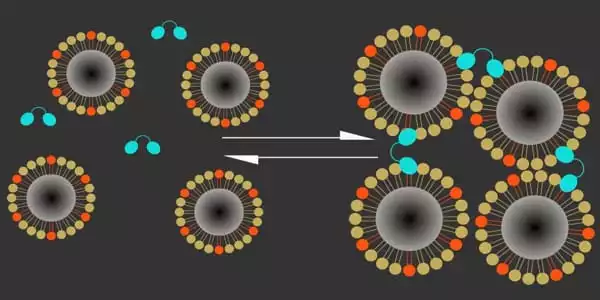Calcium ions play an important role in the physiology and biochemistry of organisms’ cells. They play an important role in signal transduction pathways, where they act as a second messenger, neurotransmitter release from neurons, muscle cell contraction of all types, and fertilization. Many cellular processes are regulated by calcium, and it plays important structural roles in living organisms. Calcium regulates skeletal muscle structure and function, fibrin polymerization, and impulse conduction in the nervous system.
Researchers have devised a novel method for detecting calcium activity within cells. The study shows the effectiveness of a red biosensor that can directly monitor calcium at specific locations within a cell, a discovery that could aid in a better understanding of the molecular basis of human diseases.
A team of Georgia State University researchers has developed a novel method for detecting calcium activity within cells. The research, led by Regents’ Professor of Chemistry Jenny Yang, demonstrates the effectiveness of a red biosensor that can directly monitor calcium at specific locations within a cell, a finding that could aid in a better understanding of the molecular basis of human diseases.
The challenge is capturing these quick changes in very specific locations, for example, if I have a muscle injury, there is a specific muscle cell calcium change that occurs very quickly.
Jenny Yang
Calcium is required for many physiological processes, including muscular, nervous, circulatory, and digestive systems health and function. Calcium amplifies signaling molecules that cause a response within cells, regulates the release of neurotransmitters (chemical messengers that transmit signals from neurons), causes muscle cells to contract, and aids in fertilization. Calcium is also necessary for proper bone formation, and many cellular processes require or use calcium.
Calcium movement and levels, given their wide range of functions, can serve as good indicators of biological mechanisms and changes. Previous attempts at developing calcium sensor tools capable of monitoring rapid signaling changes, however, have proven limited due to the slow responses of the sensors reported.
“The challenge is capturing these quick changes in very specific locations,” Yang, who is also the associate director of the Center for Diagnostics and Therapeutics and the director of the Advanced Translational Imaging Facility, explained. “For example, if I have a muscle injury, there is a specific muscle cell calcium change that occurs very quickly.”
Yang and her colleagues devised a method for designing a calcium-binding site onto the surface of several fluorescent proteins in order to better capture these signals. The research, published in the journal Angewandte Chemie, demonstrates that the red calcium sensor, known as R-CatchER, is extremely sensitive to calcium signals in a variety of cell types. Yang and her team, who have spent decades developing and refining their technique, have made a breakthrough. They recently published a paper in the journal iScience on the development of a green calcium sensor known as G-CatchER+.

“The protein we’re using can detect fleeting changes and directly measure calcium activity,” Yang explained. “We can track calcium events in healthy cells and see how they change in disease.”
Finally, R-CatchER could be useful for laboratory research and studies, such as determining whether there is a link between calcium changes and a specific disease. Their technology could also help in the discovery of new drugs.
“We have developed a novel approach to understanding how calcium influences aging events or disease states. This tool could tell scientists which signal pathway is linked to a disease and how it changes when a drug compound is administered “Yang stated. “It could reveal the precise location that the drug must target in order to be effective.”
The next step, according to the researchers, is to test the technology in animal models to better understand how various cell events contribute to disease. Yang is regarded as a pioneer in the field of “calciomics,” which combines protein chemistry, biology, cell biology, and neuroscience to create computational studies and calcium sensor tools. In recognition of her efforts, she was named a National Academy of Inventors Fellow in 2019.
The rise in intracellular calcium, which activates both small conductance potassium channels required during membrane repolarization and triggers transmitter release from the cell, is a critical component of the action potential. Neurotransmitters and hormones cause an intracellular organelle to release calcium ions into the cytoplasm, which is followed by calcium ion entry into the cytoplasm across the plasma membrane.
















